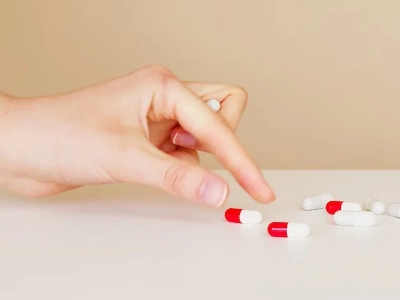Dysmenorrhea: Symptoms, Types, Causes, and Treatment

What is Dysmenorrhea?
Dysmenorrhea is the term used to describe painful periods. The primary type refers to recurrent pain, while the second condition results from reproductive system disorders. The pain usually begins one or two days before you get your period or when the bleeding actually starts. You may feel pain ranging from mild to severe in the lower abdomen, back, or thighs.

Signs and Symptoms of Dysmenorrhea
- Gripping pain and constant aches
- Cramping in your pelvic area
- Pain in your stomach
- Pain in the lower back and legs
- Headaches and feeling sick
- Digestive problems such as constipation or diarrhea
- premenstrual symptoms including sore breasts and a swollen abdomen
- Pain that lasts for 3 days
When Should You Seek Help?
Contact your doctor if the symptoms of dysmenorrhea worsen regardless of taking pain relievers. Keep track of your periods and the days on which pain is the worst and if you notice other symptoms, like headaches or heavy flows, you should keep track of those, too. Your doctor will assess you when you started getting your period, how long they last, and what kinds of treatments you might have tried already.
Types of Dysmenorrhea
- Primary type. The pain is not caused by any particular health condition. The pain usually begins when your period comes, but might start slightly before. The main symptom is a cramp or achy pain in your abdomen. You might also feel it in your lower back or the tops of your legs. You may have other symptoms when you get your period including fatigue and bloatedness.
- Secondary type. The period pain is caused by a health condition. Some women can start to experience more painful periods after years of normal period pain. f you experience severe period pain that stops you from doing day-to-day things, or that worries you at all, you should speak to your doctor. Symptoms include a feeling of heaviness in your tummy, heavy or irregular periods, and painful sex.
How Does Secondary Dysmenorrhea Cause Menstrual Cramps?
Dysmenorrhea is a result of problems with the reproductive organs such as:
- Pelvic inflammatory disease. Bacterial infection of the uterus may spread to other reproductive organs. PID can cause pain in the stomach or pain during sex.
- Cervical stenosis. Narrowing of the cervix, or the opening to the uterus.
- Endometriosis. This condition refers to the presence of uterine lining tissue outside of the uterus. This tissue bleeds during your period, causing swelling, scarring, and pain.
- Adenomyosis. Abnormal growth of uterine lining into the uterine muscle. Symptoms of this condition include abnormal bleeding and pain, as well as an abnormally large uterus.
- Fibroids. The uterus can develop growths inside, outside, or inside the walls
Causes of Dysmenorrhea
Dysmenorrhea happens when a chemical called prostaglandin makes the uterus contract. The uterus contracts throughout your menstrual cycle and it is stronger during your menstruation. It can press against nearby blood vessels, cutting off the supply of oxygen to muscle tissue. You feel pain when part of the muscle briefly loses its supply of oxygen.
Period pain can sometimes be caused by intrauterine devices, especially after a few months of insertion. After an IUD insertion, your period might change and become more irregular, or last longer than normal.
Treatment and Management of Dysmenorrhea
Speak to your pharmacist for advice on pain relief for more severe pain, there are other types of medications that are only available from your doctor. There are several things you can do to relieve pain and cramps such as:

- Place a heating pad or hot water bottle on your lower back or abdomen.
- Rest when needed and avoid drinking that contains caffeine
- Avoid smoking and drinking alcohol and massage your lower back and abdomen.
- Women who exercise regularly often have less menstrual pain. To help prevent cramps, make exercise a part of your weekly routine.
- Taking Ibuprofen as soon as bleeding or cramping starts. Ibuprofen belongs to a class of drugs called non-steroidal anti-inflammatory drugs that reduces the output of prostaglandins.



